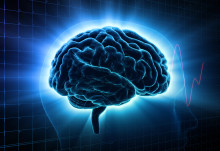

When putting together a medical sensor for blood protein levels, researchers at the LCN combined gold moving parts with chemical sensing molecules, and were able for the first time to study this interaction.
Nature Materials | Letter
Differential stress induced by thiol adsorption on facetted nanocrystals
Nature Materials(2011)doi:10.1038/nmat3124 Received18 April 2011 Accepted 18 August 2011 Published online 25 September 2011
Polycrystalline gold films coated with thiol-based self-assembled monolayers (SAM) form the basis of a wide range of nanomechanical sensor platforms1. The detection of adsorbates with such devices relies on the transmission of mechanical forces, which is mediated by chemically derived stress at the organic–inorganic interface. Here, we show that the structure of a single 300-nm-diameter facetted gold nanocrystal, measured with coherent X-ray diffraction, changes profoundly after the adsorption of one of the simplest SAM-forming organic molecules. On self-assembly of propane thiol, the crystal’s flat facets contract radially inwards relative to its spherical regions. Finite-element modelling indicates that this geometry change requires large stresses that are comparable to those observed in cantilever measurements. The large magnitude and slow kinetics of the contraction can be explained by an intermixed gold–sulphur layer that has recently been identified crystallographically2. Our results illustrate the importance of crystal edges and grain boundaries in interface chemistry and have broad implications for the application of thiol-based SAMs, ranging from nanomechanical sensors to coating technologies.
Figures at a glance
Article text (excluding photos or graphics) available under an Attribution-NonCommercial-ShareAlike Creative Commons license.
Photos and graphics subject to third party copyright used with permission or © Imperial College London.








